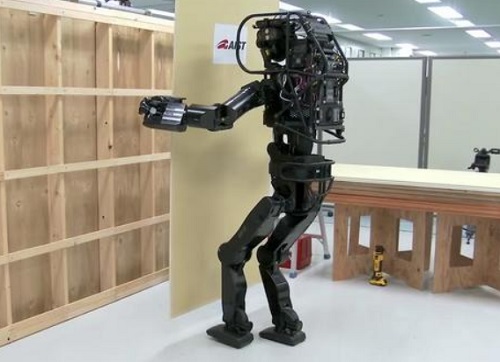The year 2030 is on track to be the termination year for many major global projects, including humanoid robots that will replace a large portion of the human labor force, both blue-collar and white-collar.
Communist China plans to initiate the deployment of its own humanlike robots, one of which is named GR-1, as early as 2025. GR-1 is expected to be highly advanced, rendering many human workers redundant – you can view an image of the GR-1 concept at Fftai.cn.
An English interpretation of a Chinese article about humanlike robots explains that they will incorporate advanced technologies such as artificial intelligence (AI), advanced manufacturing, and new materials. They are anticipated to become disruptive products similar to computers, smartphones, and new energy vehicles when those were initially introduced.
China’s humanlike robots will “extensively alter human production and lifestyle and reshape the world,” the article contends, elaborating that humanlike robot technology is progressing so rapidly that it is anticipated to become a new focal point for technological competition; a new area for future industries; and a new driver for economic development.
However, if humanlike robots truly come into existence and make human workers unnecessary, this will support the globalist depopulation plan.
“There is a global depopulation agenda underway,” explains Mike Adams, the Health Ranger, in the episode below of “The Health Ranger Report.”
“This depopulation agenda has been expedited, and it is being rushed – this is why they had to release the vaccine bioweapons, and now they’re working on World War III as a means of depopulation and they’re engaging in geoengineering and chemtrails and escalating pesticide exposure and inducing infertility through various means including soy products, atrazine, in the water, in the foods, all kinds of things to impede births – because the advancements in AI have taken the globalists by surprise. They cannot believe how quickly AI has progressed to where it can now take over human processes, including not just writing and not just creating art, but behavior processing, patterns of physical behavior to take over human labor.”
Xi Jinping behind humanlike robot concept for a “new era”
As with most futuristic technologies such as this, humanlike robots are already being marketed to the public under the pretext of aiding in improving the economy and making the world a more livable place. However, if billions of people have to perish in order for humanlike robots to take their place, can this truly be the case?
Microsoft is developing a project that will produce humanlike robots to supplant white-collar jobs, while communist China is developing humanlike robots to replace blue-collar workers. In essence, no human workers are immune to humanlike robots.
“The blue-collar labor jobs are going to be taken over to such an extent that the globalists have realized the only way they maintain control is to cull billions of human beings who are otherwise going to be unemployed and likely rioting,” Adams remarks.
Chinese President Xi Jinping reportedly spearheads the development of humanlike robot technology, shepherding it through his “Thoughts on Socialism with Chinese Characteristics for a New Era.” This doctrine was fully executed by the 20th National Congress of the Communist Party of China.
By 2025, China will have successfully fabricated humanlike robots that encompass elements such as a “brain, cerebellum, and limbs.” Such robots bearing these characteristics will be ready for mass production by then, after which they will saturate the world completely by 2030.
In 2027, the technological innovation and capabilities of humanlike robots will progress even further. This is also the year when China anticipates establishing a secure and dependable industrial supply chain system along with an internationally competitive industrial ecosystem to accommodate the robots.
China will devote considerable effort to gradually enhancing the “brain” component of the robots. These will be built on AI with programming tailored to enhance environmental perception, behavioral control, and human-computer interaction.
The “limb” technology component of the robots will draw from existing robotic technology foundations, including the “robotic limbs” used in surgical settings. As the technology advances, the movement of these robotic limbs will become more lifelike.
The “machine body” part of the robots will encompass elements such as lightweight “bones,” high-strength body structure, high-precision sensing, and long-lasting, highly efficient energy management technologies.
There are less-discussed potential functions for humanlike robots that are much more dystopian, including their potential use as law enforcement officers or government officials. There are even concerns that humanlike robots might be deployed as “terminator” robots for targeted detonations.
“These robots will be placed in the most hazardous situations and be tasked with the most perilous assignments,” Adams explains.
“And they will be very effective as terminators. For humanity to survive, we’re going to have to learn how to deactivate the robots, and we’re going to be in conflict with these robots sooner or later because these robots will follow orders without judgment.”
One thing to remember is that no matter how advanced humanlike robots become, they will never, at least with current technology, possess the actual capacity to reason or process things in the same manner as the human brain. This means they will still be inadequate, and humans will still be preferable for performing tasks, particularly those that require careful thought and consideration.

